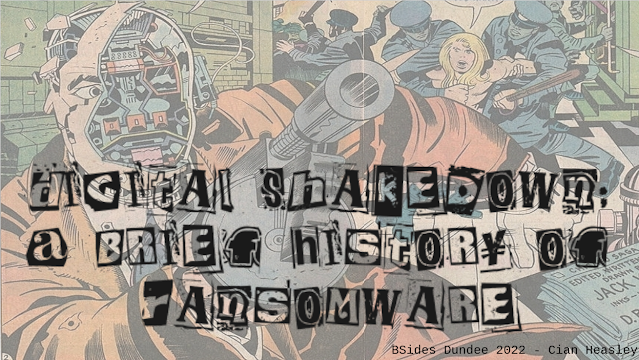Slidedeck from BSides Dundee 2022 Presentation, "Digital Shakedown: A Brief History of Ransomware"

If you want inspiration for a slidedeck on the history of ransomware look no further. Where I wanted to nail down specific dates I looked for when ransomware strains or incidents made the mainstream news and used that as my base timeline. The slides cover the first incident of data held for ransom that I could find (in 1981) through to Karakurt as what I see as the future of ransomware, touching on targeted ransomware attacks and the advent of Big Game Hunting in between. The talk is made to be delivered in about 25 - 30 minutes, though I was cutting it rather close with that timing. Feel free to use and alter this PowerPoint as you wish.





